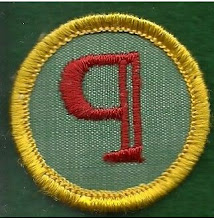I miss editing on paper and I miss proofreader's marks.
Back in the olden days, manuscripts came to me in plain text on long rolls of newsprint. I worked for a typesetter and each hunk of text of paper maybe two feet long: about as big as I could get on my desk, about a half chapter in plain text. The length of the paper was determined by the vicissitudes of the Merganthaler VIP which I won't go into here.
The text was not easy to read because it contained all the coding (bold, italic and so forth) and we read for content and for code. Nonetheless it was easy to find misspellings, punctuation errors and such. Theoretically the text would have been through a substantive edit before it got to me, but I often found many other errors -- verb tense disagreements. I still find myself trying to put proofreader's marks when I edit today in Marked Changes.
After a couple rounds of editing we would call for the manuscript in format -- the galley proof, and only then would we see the text in page format. A final read, very through by me and the author and the corrected manuscript went up to Production to be pasted up. I was luck enough to be able to proof and paste up a number of books, occasionally even running the press.
Enough of the olden days. Frankly, it's much faster to edit in Marked Changes and faster for all manner of writing (for better or worse) to be published.
I leave you with some fun proofreader's marks:
Tuesday, February 19, 2013
Subscribe to:
Post Comments (Atom)



Yep, back when I taught high school journalism, these marks were an essential lesson.
ReplyDelete